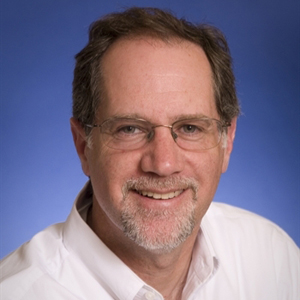
Sylvia Johnson / Justice Policy Institute
Marc Schindler
It’s tragic that so many people can say they have been touched by the U.S. prison system. A great uncle here, a brother there, a younger nephew or niece, and for far too many from our most vulnerable communities, they can point the finger at themselves.
In fact, 1 in 34 adults were under some form of correctional control in 2010, and nearly 71,000 youth were held in confinement, according to the Bureau of Justice Statistics. (Bureau of Justice Statistics, ONE IN 34 U.S. ADULTS UNDER CORRECTIONAL SUPERVISION IN 2011, LOWEST RATE SINCE 2000, NOVEMBER 29, 2012, http://www.bjs.gov/content/pub/press/cpus11ppus11pr.cfm)
As a white, middle-class man, I have been largely spared being so directly touched by the system. However, through my experiences over the past 25 years–as a public defender, an attorney litigating on behalf of incarcerated children, helping to run and reform Washington, D.C.’s juvenile justice agency, as a “Big Brother” for more than two decades, and most recently as a funder – I have seen the generations of lives impacted, tormented and, often ruined by a criminal justice system that far too often results in broken families, unemployment, single- and un-parented families, and defeatist attitudes.
The reality is that in the United States, the richest and most powerful country in the world, we have created an incarceration generation. Over the past 40 years, we have seen the U.S. criminal justice system morph into the largest confinement complex in the world, with the number of incarcerated increasing by 500 percent in the last 30 years and the United States locking up more people than any other country in history. (Heather Ann Thompson, Why Mass Incarceration Matters: Rethinking Crisis, Decline, and Transformation in Postwar American History, The Journal of American History, December 2010. 703-734. http://www.temple.edu/history/thompson/documents/ThompsonWhyMassIncarcerationMatters.pdf)
Despite evidence of its negative impacts and poor outcomes, incarceration has far too often become the primary means of “crime control.” And as a result of misguided policies and practices, we are now permanently subjecting millions of people to legalized discrimination in employment, housing, education, public benefits and jury service, almost as if the civil rights movement never existed.
As a result of this “justice” system, far too many are now permanently subject to harsh, draconian sentencing and collateral consequences that result in loss of voting rights, government housing, and federal grants for college, including a significant portion of the more than 200,000 youth a year who are prosecuted as adults.
As I am about to have the honor of starting as Executive Director of the Justice Policy Institute (JPI), I want to add my voice to the call for justice that is increasingly being heard across this country, to say we can and must do better.
I am also proud to join with many of our nation’s leading experts, activists, and reformers who have lent their voices to create “Incarceration Generation,” a book of essays by prominent experts in the field of criminal and juvenile justice reform which was published by JPI last month. These essays clearly highlight how the persistence of bad policies, ineffective practices and misinformation has played a role in the rise of mass incarceration in our country, while also explaining how more cost-effective and humane alternatives to incarceration would make our communities safer.
There is also now strong evidence across the country showing the way to a fairer and more effective juvenile justice system, and after decades of expanding correctional populations we are finally seeing a decline in the number of young people confined nationally, from a high of approximately 107,000 in 1997 to 70,000 in 2010. These reforms – many of which have been supported by national initiatives including the Annie E. Casey Foundation’s Juvenile Detention Alternatives Initiative (JDAI) and the John D. and Catherine T. MacArthur Foundation’s Models for Change effort – have shown that progress is possible by using strategies such as using objective admissions criteria and research-based risk instruments for intake, adequate representation in court, investing in effective community based alternatives, case processing reforms, and effective re-entry planning and aftercare for youth returning to their communities.
In short there is no shortage of information and examples of what works, we just need the leadership, political will and determination to make sure we are implementing policies and practices that are shown to be effective.
The dramatic and shocking rise in mass incarceration over the past 40 years has had profoundly negative effects on younger generations and their families, schools, and neighborhoods. My hope is that we can build on current trends where communities across the nation are beginning to rely less on incarceration, and work together to reverse course before it is too late for another generation.
---
Marc Schindler is incoming Executive Director for the Justice Policy Institute. He can be reached at: mschindler@justicepolicy.orgor 202-558-7974 ext/ 311.